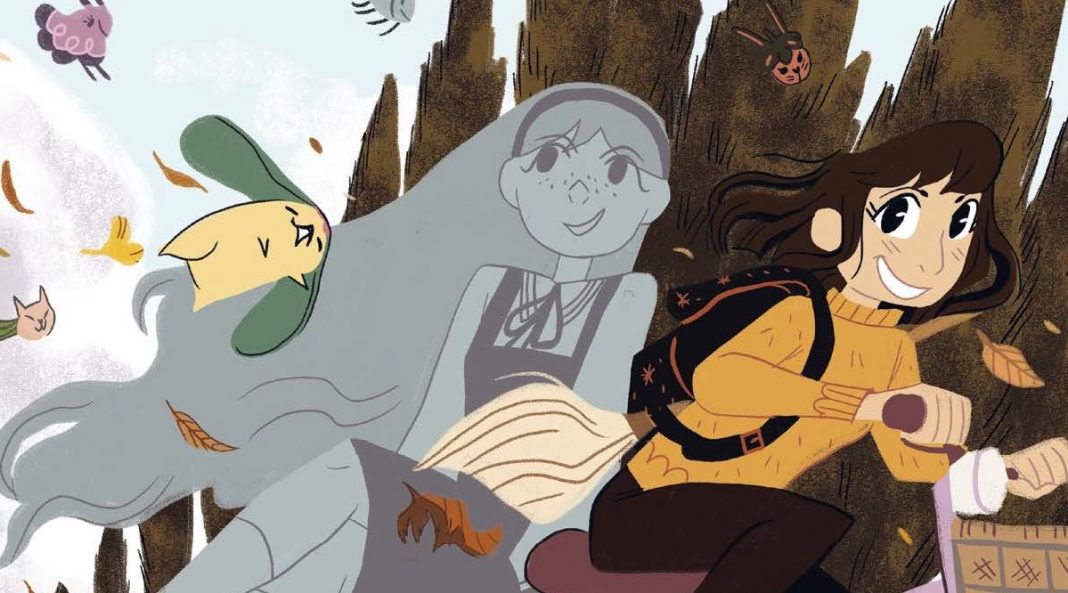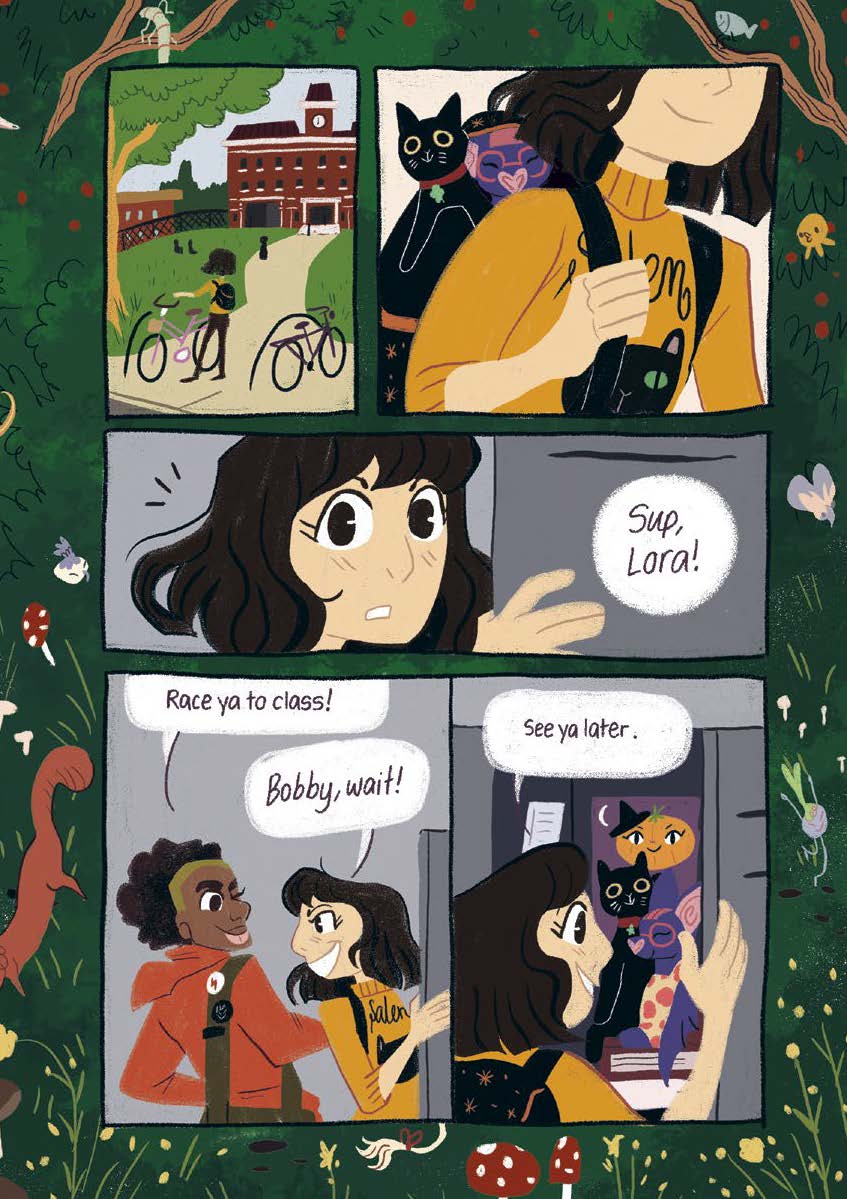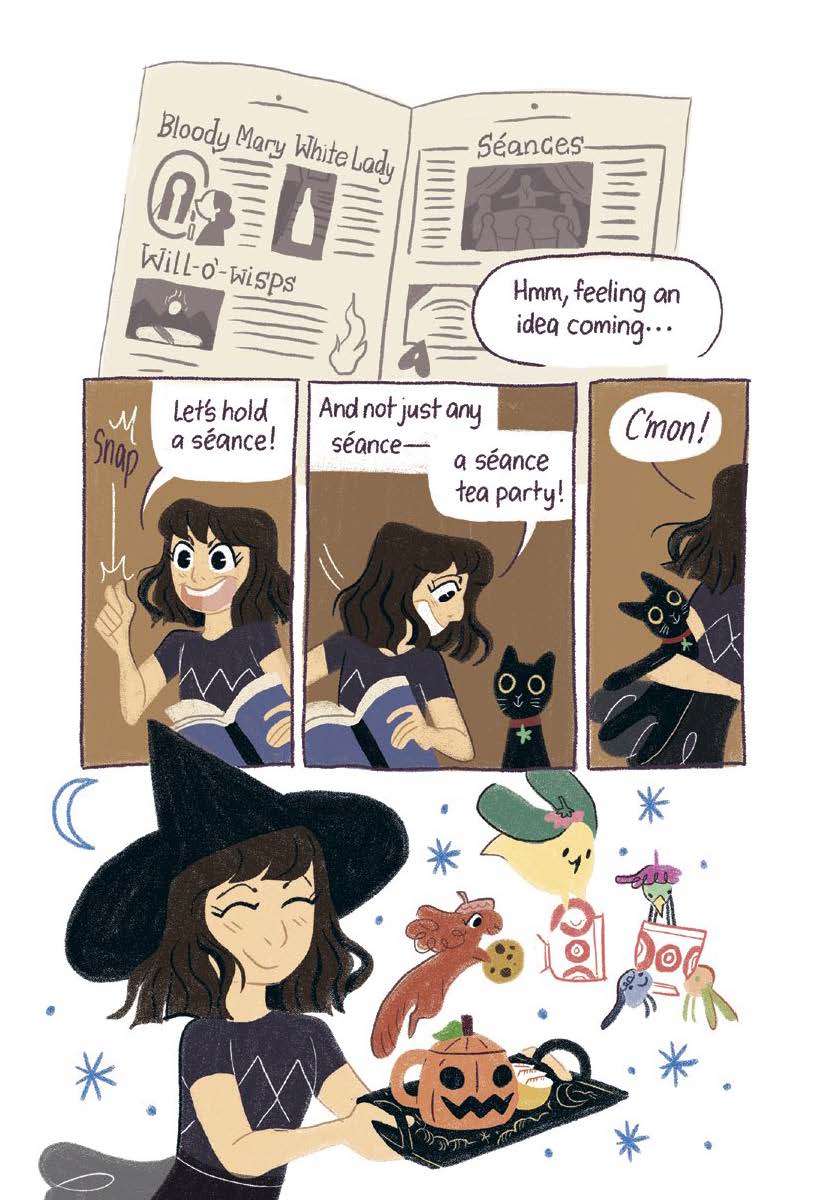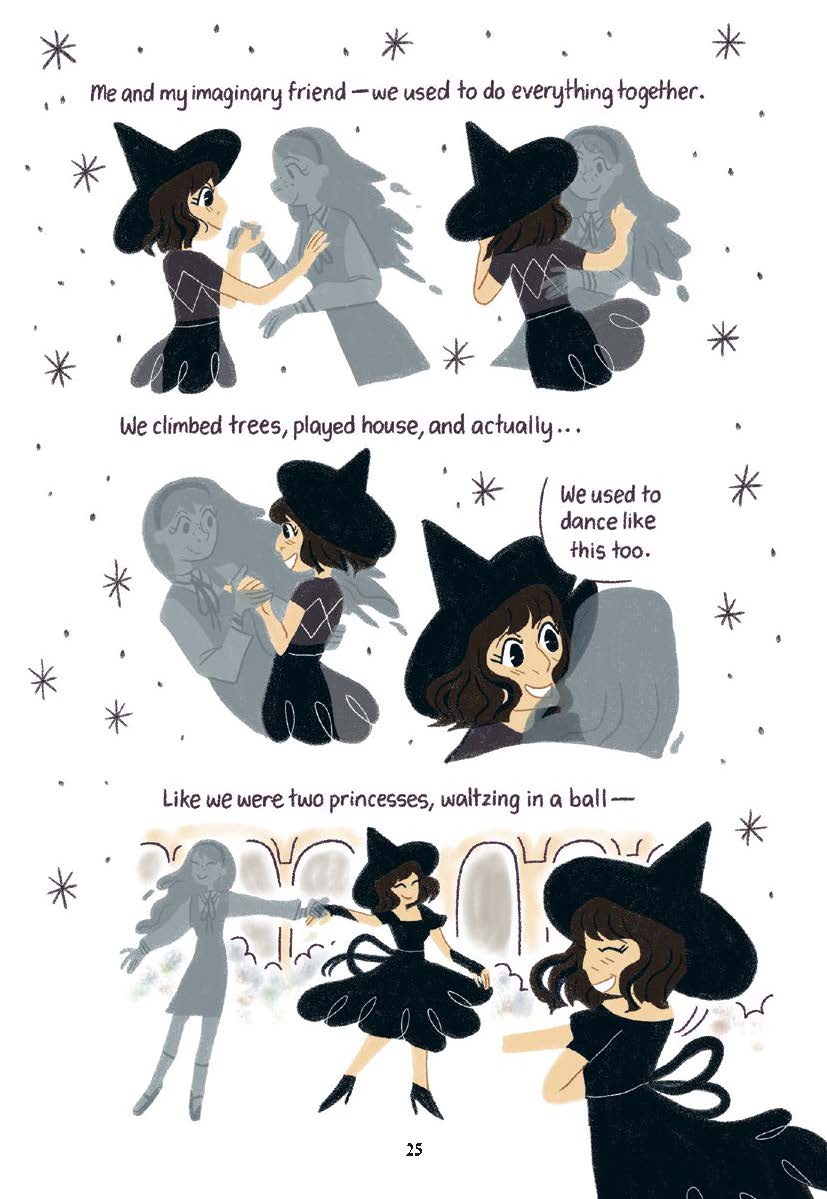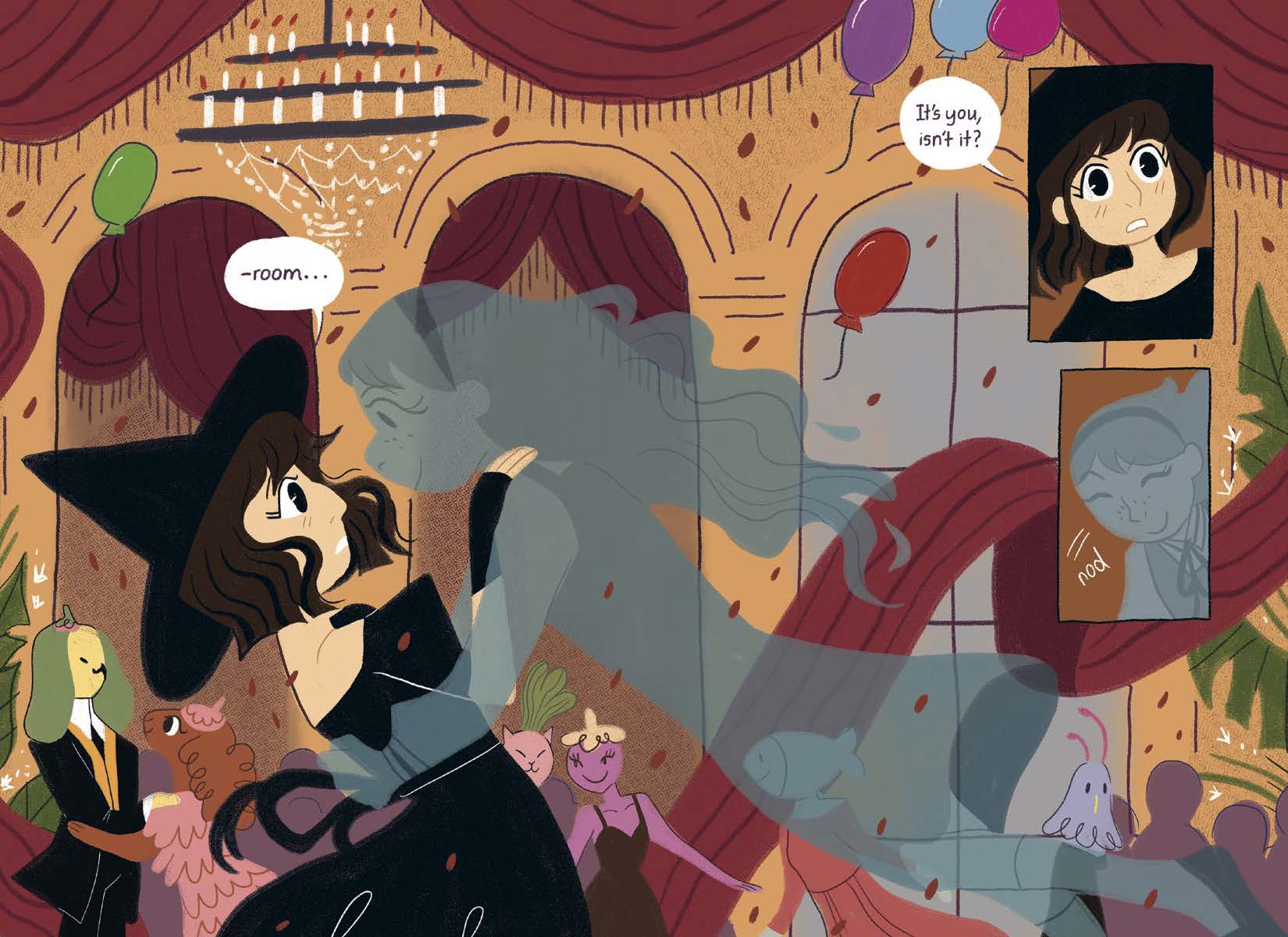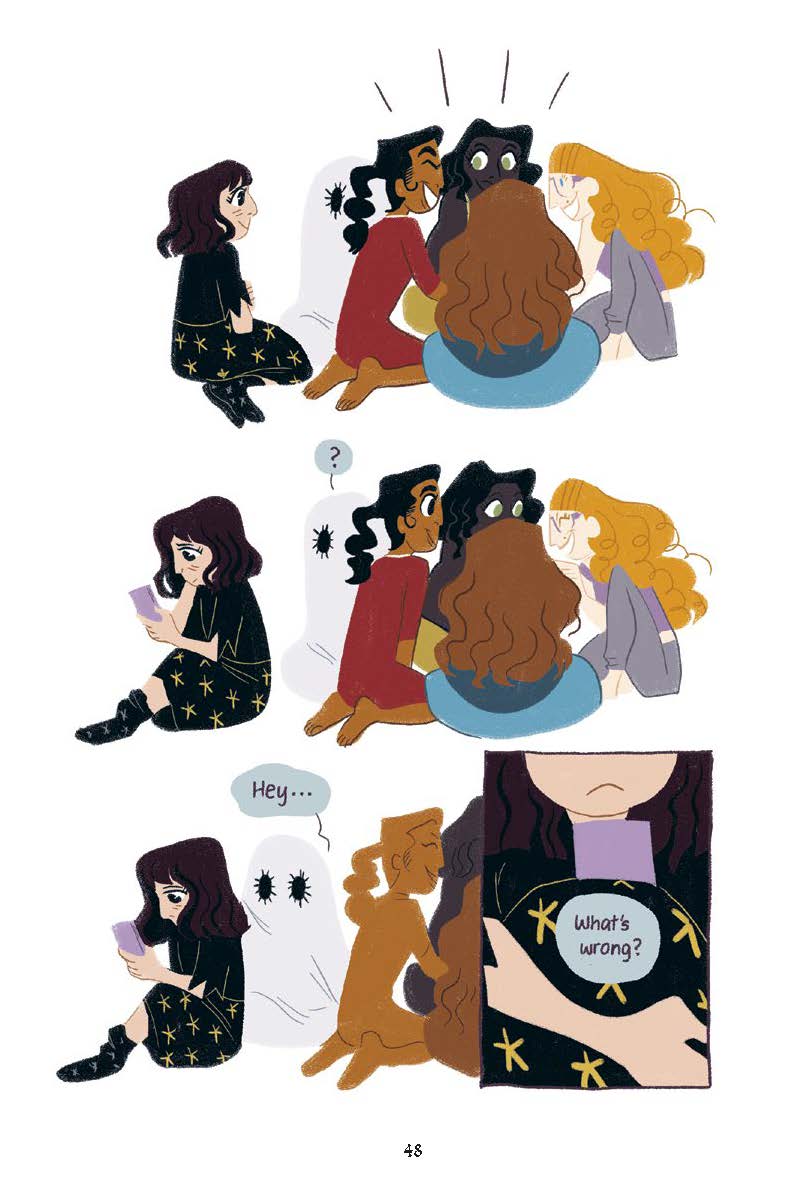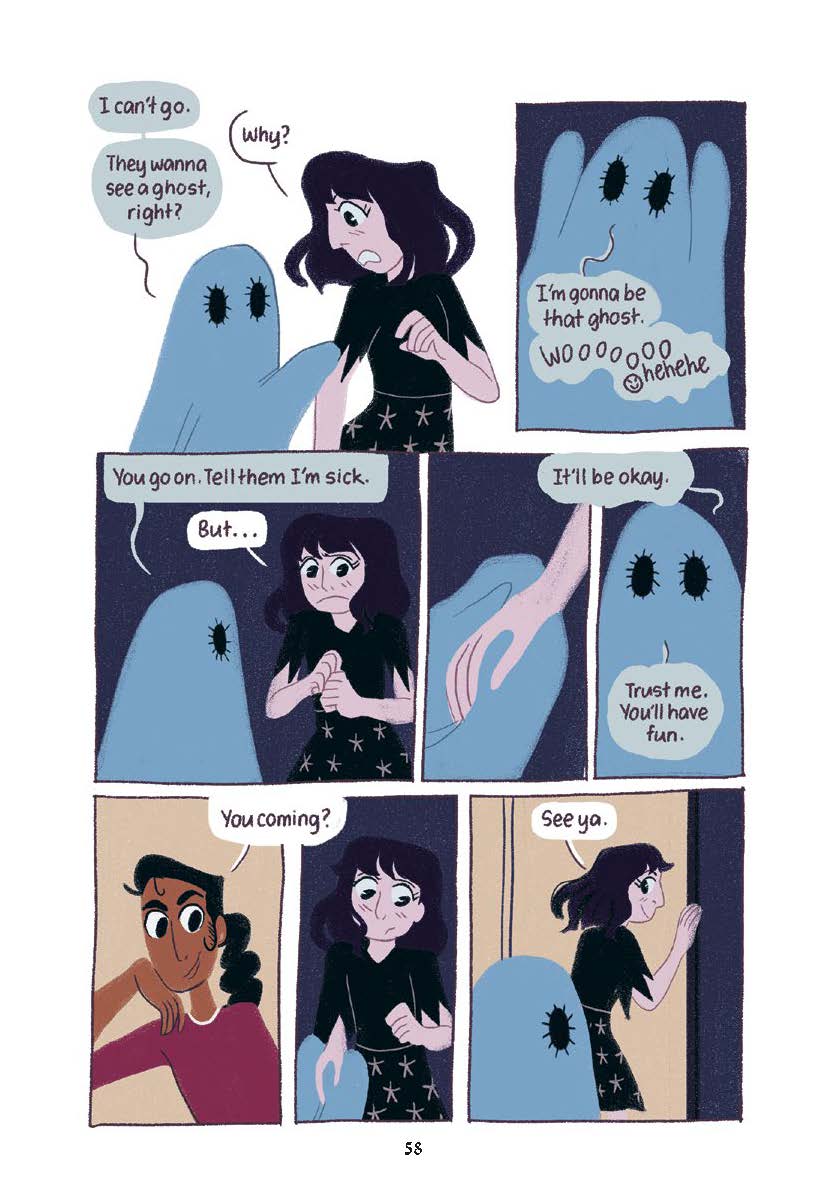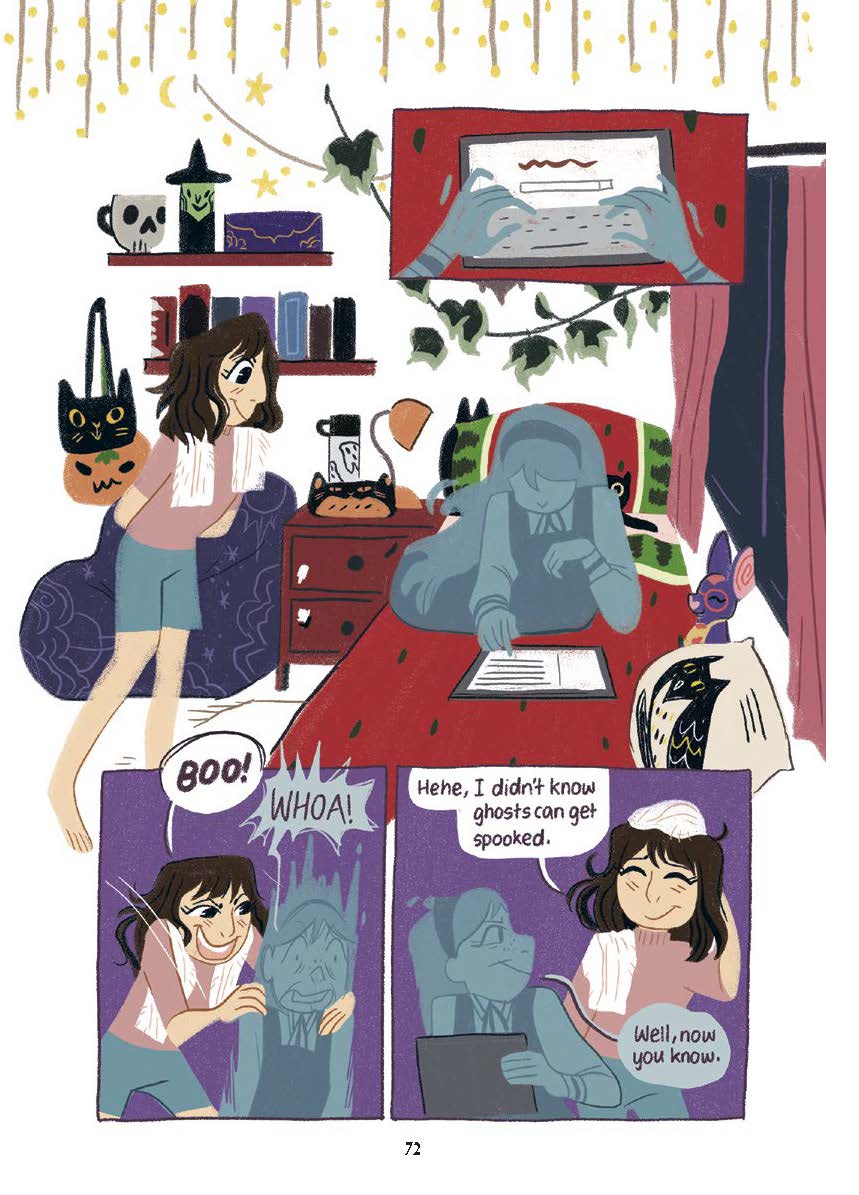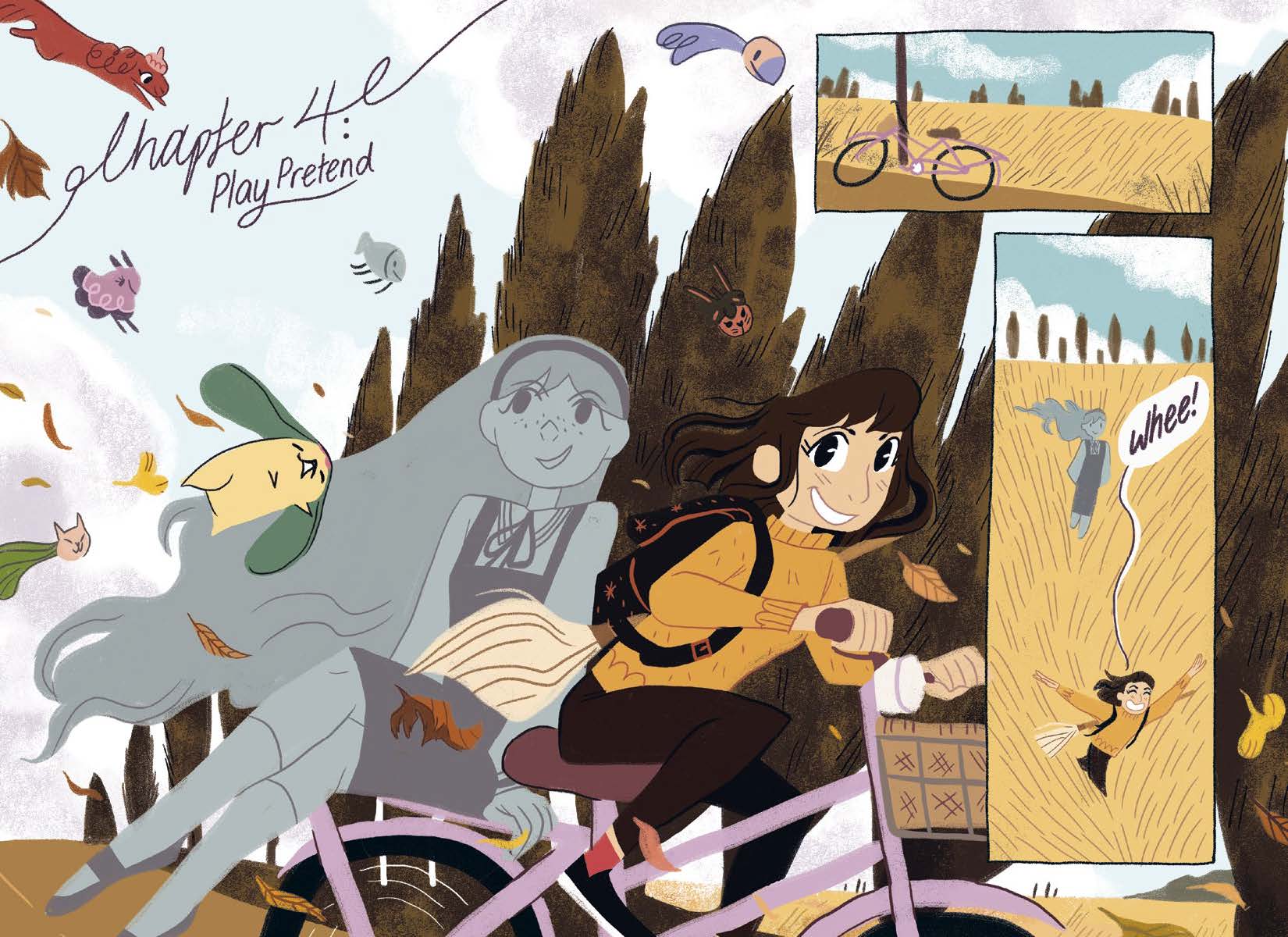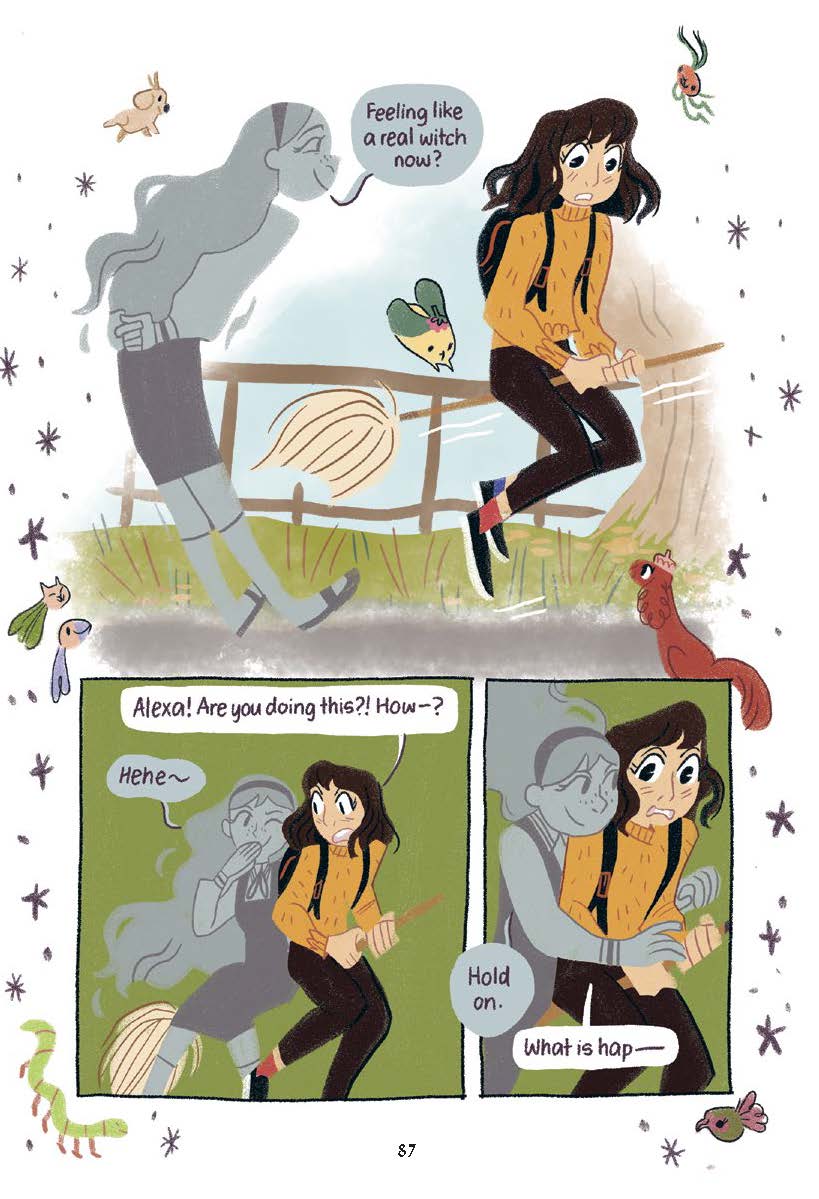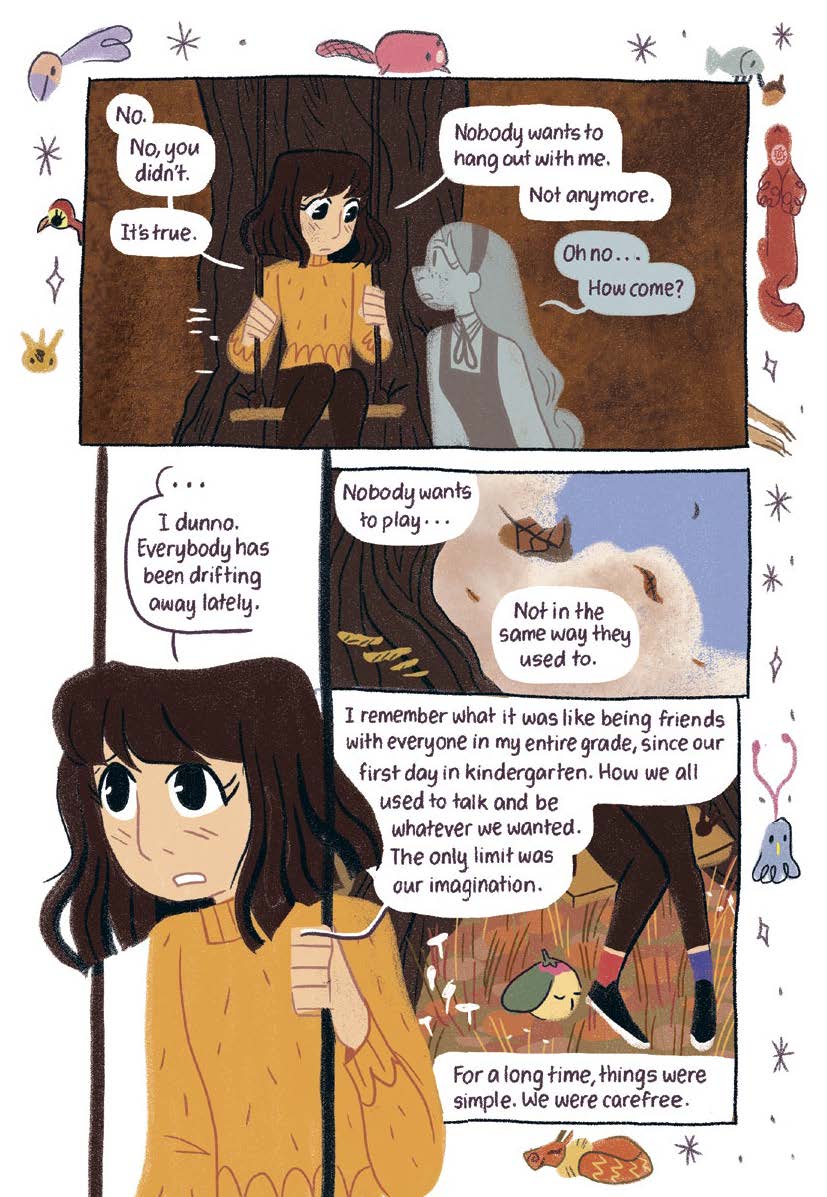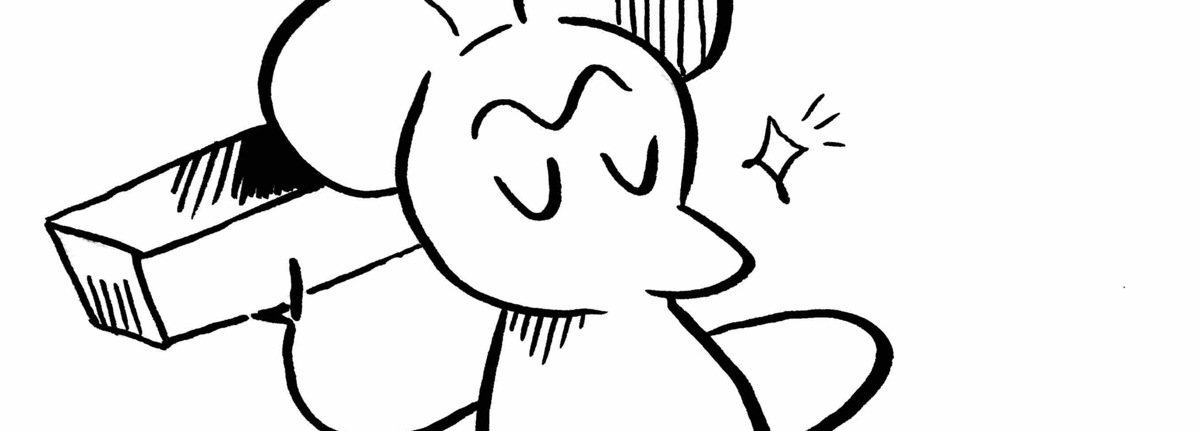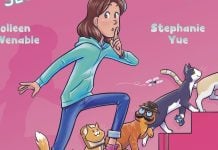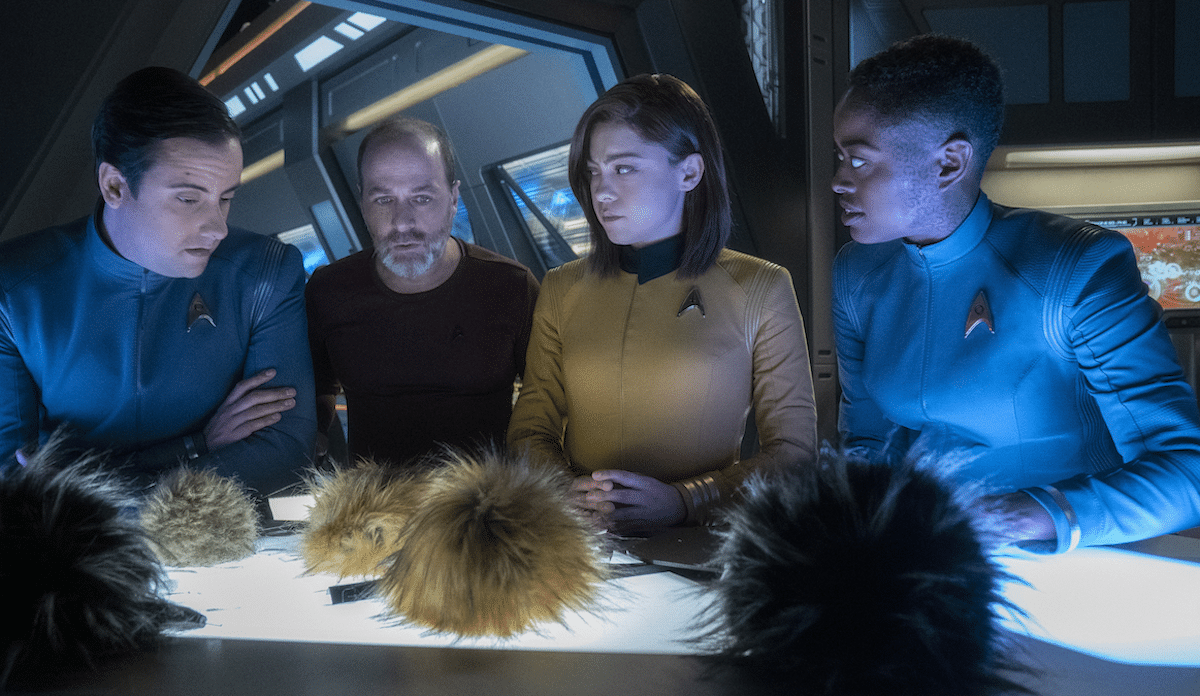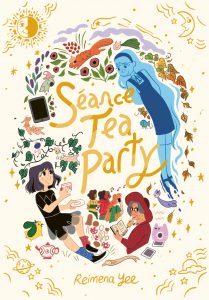
In Séance Tea Party by Reimena Yee, Lora is desperate to avoid growing up. When she starts to feel abandoned by her peers, she gets desperate, and attempts to communicate with the beyond using a homemade “ghost phone” board. When the séance succeeds beyond Lora’s wildest dreams, she meets a ghost named Alexa. Is Alexa the friend that Lora has been looking for?
Séance Tea Party will be available from RH Graphic on September 15th, 2020. In the meantime, The Beat caught up with Yee to ask her about how she achieved the unique tone of Séance Tea Party, what Halloween traditions (if any) inspired the graphic novel, and how she developed her personal “floral goth” fashion sense!
AVERY KAPLAN: What are the necessary ingredients for a ghost story?
REIMENA YEE: It’s gotta be spooky; it’s got to be sad; and it needs to have a touch of humanity.
KAPLAN: How did you go about capturing the Halloween spirit in the art for this comic?
YEE: Lots of orange, yellows, blacks and candy-colored goodness! Vintage Halloween artwork was also a part of this giant moodboard I had for Séance Tea Party (which included other vintage children’s book illustrations).
KAPLAN: What Halloween traditions do you have? Were any of them inspirational for this comic?
YEE: I am Malaysian so Halloween is not in any way a tradition or holiday in my country or culture. I experience it mostly via the internet. I already love macabre, spooky things during the other 364 days of the year, so I quickly accepted Halloween and the entire month of October as opportunities to celebrate what I love. When I was in Australia – where Halloween is also not a big thing -, my little tradition was to dress up in my most witchy clothes (not a costume!) and visit every pastry or dessert shop to pick up their Halloween specials, and bring them home to eat. That was fun. In regards to inspiration, I think it’s just me including the stuff I enjoy into my stories.
KAPLAN: Were there any comics, books, music, or other media that inspired Séance Tea Party?
YEE: Mostly movies like: A Letter to Momo, My Neighbour Totoro, When Marnie Was There, Kiki’s Delivery Service, and Matilda.
A book: The Miraculous Journey of Edward Tulane.
And three songs: Both Sides Now, Fine on the Outside and Long Lost Child.
All of them possess the wistful, bittersweet, inner joy I wanted for Séance Tea Party.
KAPLAN: I love the way you use the gutters for drawings (or the way the gutters disappear altogether during certain scenes). Did you have a process for deciding what the layout of a given page would look like?
YEE: I compose layouts according to the emotional and narrative demands of each scene in a script. I used to study literary analysis, so I would examine what I want to convey to the reader through character dialogue, and then engineer visual-literary devices into the dialogue’s corresponding artwork so I could further strengthen its meaning. For example, in Séance Tea Party, the visual changes that signal Lora’s growth into a teenager are when the imaginary fairies disappear from the gutters and the panel borders become straighter and more gridlike. It’s simultaneously a sudden and subtle, unnoticeable change. I always think of this one quote from a Tumblr user (paraphrased), “Isn’t it wild how as kids, you would play outside with your friends and never knew that was the last time you ever did that.” That’s what growing up is like. It just happens. So the layouts visualise this phenomenon.
I always make my comics in this way, haha. There’s so much meaning I can create from a single image and I enjoy that, but sometimes… a blue curtain is just a blue curtain.
KAPLAN: Séance Tea Party is the sort of ghost story where you get to see part of the story from the perspective of the ghost! Was it important for you to include the perspective of both Lora and Alexa in the comic?
YEE: Maybe it’s a bit cold to read it this way, but I see Lora, Alexa and Diana (Alexa’s childhood friend) as representations of the book’s themes. Lora represents childhood afraid of aging, Alexa represents an adolescence struggling yet wanting to let go, and Diana represents a confident, mature adulthood that hasn’t lost touch with magic. Séance Tea Party is a personal story that is driven by the life stories of these three young and old women, so including each person’s perspective was necessary.
KAPLAN: Lora’s line “I feel more like myself on the outside now” is such a beautiful expression of how makeup and fashion can be validating forms of expression. Can you tell us a little bit about how Séance Tea Party addresses this theme?
YEE: Most coming-of-age stories tend to posit makeup/fashion as a necessary means to gain the approval of others (whether to signal that you are “attractive” or “put together”) or to reject makeup/fashion as part of a message to “Love yourself!! Your inner beauty doesn’t need those!” Instead, what those two ideas did for me was contribute to the complete alienation of my identity from my body. As a teen, I didn’t hate or love the way I looked. I simply had a neutral relationship with my body, and that made me unmotivated to do anything with it. No makeup, barely any skincare, no experimentation… I didn’t want to participate in the theatre where anything I did to myself was subject to the acceptance or rejection of other people’s approval… by peers, by family, by teachers and adults, by my own self, so I did nothing. It wasn’t until I turned 20 and began living life on my own terms when I started thinking about what I wanted to do with my own body for the sake of doing something I liked. That was when the theatre faded away into irrelevance. So I dyed my hair, explored makeup, bought clothes I liked, put on tattoos, developed my “floral goth” fashion sense… and slowly, I began to “feel more like myself on the outside.” Now I am happier and see my body as something I craft over time, the same way I do with my art and stories. It’s still a neutral relationship, but healthier, liberating.
YEE (con’t): I wanted to present this alternative take to pre-teens and teenagers. Lora embodies this take when she used makeup and fashion as tools she has power over. When she dyed her hair purple and put on dark lipstick, she didn’t become somebody different or beautiful. She became the “spooky gothic witch” she always saw herself as; when previously she didn’t have the means or knowledge to actualise it. What she experienced is the kind of self-realisation that doesn’t hinge on the acceptance or rejection of other people’s approval. Knowing that this transformative journey is an option for older children (and young adults!) is part of the joy of growing up. And that’s what the book is about!
Here’s a mini comic of mine that touches on this topic.
KAPLAN: A few scenes in Séance Tea Party are set in a cemetery. Are you a fan of cemeteries? Were there any real-world cemeteries that inspired you?
YEE: I love cemeteries… in the daytime and if they are secular or in churchyards. I find them really quiet and peaceful places to explore and recenter myself. Like a park, but macabre.
My favorite cemetery is probably everyone’s favourite: Highgate Cemetery in London. I had the chance to visit it for the first time when I was in England last winter… which was a whole event on its own. I had only known it through the internet for a long time! Someday, I’d love to visit Parisian cemeteries and catacombs.
Séance Tea Party will be available at your local comic shop, bookstore, and public library beginning on September 15th, 2020.


